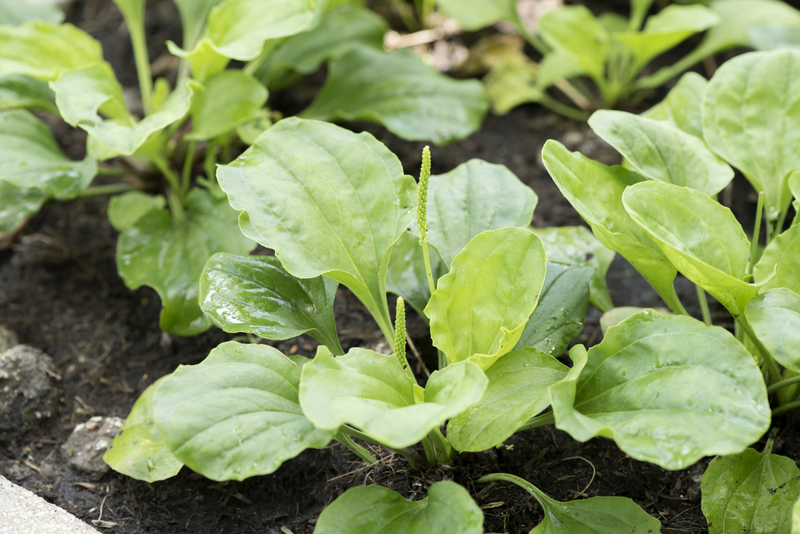Innovative Wind Management for Your Garden
Posted on 18/08/2025
Innovative Wind Management for Your Garden: Strategies, Solutions, and Smart Design
Is your garden exposed to strong winds, stunted growth, or damaged flowers? Discover how innovative wind management for your garden can help you cultivate a resilient, thriving outdoor space. Whether you have a breezy patio, an exposed vegetable patch, or a vulnerable flowerbed, using creative wind protection techniques can transform your garden's microclimate and boost plant health.
Why is Wind Management Important for Gardens?
Wind is an essential natural element, but excessive gusts can cause multiple problems in a garden setting. Innovative wind control for gardens ensures your plants receive the gentle airflow they need while minimizing the damage caused by strong, persistent winds.
- Physical Damage: High winds can break stems, snap branches, and uproot younger plants.
- Increased Evaporation: Strong breezes dry out soil and plant foliage much faster, increasing the watering requirements.
- Pest and Disease Spread: Wind can carry pests, spores, and diseases across your garden.
- Chilling Injury: Cold winds can lower ambient temperature, stressing or killing less-hardy plants.
- Soil Erosion: Rabbits, dust, and topsoil can be blown away, harming garden fertility.
Mastering garden wind mitigation enables you to provide a stable, sheltered, and productive environment for all types of plants.

Understanding Your Garden's Wind Exposure
Before implementing innovative wind management techniques, it's critical to analyze your site's wind patterns. Here's how to get started:
- Observe Wind Direction: Spend some time outdoors at different times and observe the prevailing wind direction.
- Use Simple Tools: Hang ribbons or windsocks in multiple spots to see where gusts are strongest.
- Identify Microclimates: Fences, walls, hedges, and other structures may create sheltered zones or cause wind tunnels.
Document these findings to create a plan for effective wind management in your garden.
Traditional vs. Innovative Wind Management Techniques
While traditional methods may rely heavily on solid fences or thick hedges for windbreaks, these can have drawbacks--such as creating turbulence, shading, or blocking wildlife movement. Modern creative wind management solutions are more nuanced, tailored, and sustainable.
Traditional Windbreaks
- Solid fences (wooden, metal, or brick)
- Dense evergreen hedges
- Tall rows of trees
Innovative Approaches to Wind Management
- Layered Planting: Combining different heights and densities for maximum protection
- Permeable Barriers: Allowing some airflow to reduce turbulence
- Moveable Windbreaks: Portable structures for annual or seasonal repositioning
- Living Wind Screens: Using climbers, tall grasses, and edible hedges
- Artistic and Functional Fencing: Integrating materials like woven willow, recycled plastics, or translucent panels
- Wind Sculptures and Art Installations: Redirecting wind with kinetic elements
Designing Innovative Wind Management Solutions
The key to success is integrating several strategies, customized to your garden's aesthetics and needs. Below are creative solutions for optimal wind protection:
1. Permeable and Layered Windbreaks
A common misconception is that solid barriers are best. In fact, permeable windbreaks--those that allow 30-50% air passage--are far more effective. They diffuse the wind rather than deflecting it, which reduces turbulence and protects a broader area downwind.
- Woven Fences: Willow, hazel, or bamboo panels woven in panels create rustic, natural windbreaks with built-in permeability. These structures slow wind and add a handmade touch to your garden design.
- Slatted Wood Fences: Vertical or horizontal slats with small gaps allow airflow and light, while reducing wind speed.
- Hedge Layers: Use a mix of fast-growing shrubs, tall perennials, and climbers. Plant tall shrubs at the back, medium-height ones in front, and fill gaps with dense groundcovers.
2. Living and Edible Windbreaks
A more sustainable approach involves living wind management. These elements provide habitat for wildlife, boost garden beauty, and may even feed your family.
- Berry Hedges: Currants, gooseberries, blueberries, or elderberries make excellent windbreaks and provide delicious harvests.
- Edible Grasses and Bamboo: Combine ornamental and edible varieties, such as giant Miscanthus, lemongrass, or hardy bamboo, along garden borders.
- Espaliered Fruit Trees: Train apples, pears, or figs along fences to create both a windbreak and a vertical fruit garden.
3. Vertical Gardens as Wind Screens
Apply the concept of green walls for innovative wind buffering. Vertical gardens on trellises or modular shelves can break up wind corridors while maximizing limited space:
- Freestanding Green Screens: Install trellises with climbing roses, honeysuckle, or passionflowers across windy edges.
- Modular Planter Walls: Stack pots or pockets on frames, filled with tough plants like succulents, herbs, or ferns.
- Pallet Gardens: Repurpose wooden pallets into vertical living screens that absorb wind and boost biodiversity.
4. Artistic and Functional Fencing
Why not turn your windbreak into a work of art? Innovative garden wind barriers can fuse aesthetics with function:
- Stained Glass or Perspex Panels: Create colorful, semi-transparent windbreaks that add vibrancy and break up wind movement.
- Recycled Metal Sculptures: Welded pieces can form open-work barriers that catch the eye and diffuse air currents.
- Kinetic Installations: Incorporate wind-activated sculptures to both entertain and subtly redirect breezes.
5. Portable, Modular, and Seasonal Windbreaks
Some gardeners need wind protection only during specific seasons, or may want to test locations without permanent construction.
- Fabric Screens: Durable outdoor textiles stretched over frames create instant, movable windbreaks.
- Raised Beds with Built-In Barriers: Tall sides on planters can shield delicate seedlings from early spring gusts.
- Movable Plant Shutters: Use hinged panels to open and close as required, offering customized protection and flexibility.
6. Strategic Plant Placement and Microclimates
Sometimes, the simplest wind mitigation strategy is thoughtful plant arrangement. Use hardier, wind-tolerant species as outer layers, shielding more delicate varieties inside.
- Windward Buffers: Plant native shrubs or grass species that readily withstand strong winds on the exposed side of your garden.
- Inner Circles: Shelter tender fruit, herbs, or flowers behind the toughest outer rows.
- Sunken Beds: Lower the growing level slightly to create recessed beds, minimizing wind exposure for low crops.
Choosing the Right Plants for Windy Gardens
Not all plants tolerate wind equally. Part of innovative wind management is selecting hardy varieties for exposed spots, using the following options as living barriers or wind-tolerant crops:
Wind-Resistant Shrubs and Trees
- Hawthorn (Crataegus)
- Sea Buckthorn (Hippophae rhamnoides)
- Privet (Ligustrum)
- Guelder Rose (Viburnum opulus)
- Scots Pine (Pinus sylvestris)
- Hornbeam (Carpinus betulus)
Ornamental Grasses
- Muhly Grass
- Maidengrass (Miscanthus)
- Pampas Grass (Cortaderia selloana)
- Fountain Grass (Pennisetum)
Durable Perennials and Herbs
- Lavender (*Lavandula angustifolia*)
- Sage (*Salvia officinalis*)
- Thyme (*Thymus vulgaris*)
- New Zealand Flax (*Phormium*)
Annuals for Windy Sites
- California poppy
- Cornflower
- Swan River daisy
By integrating these wind-tolerant plants into your garden borders and beds, you can naturally reduce wind impact while maintaining attractive, diverse vegetation.
Maintaining and Upgrading Your Wind Management System
Effective wind management in gardens is not a "set it and forget it" project. For lasting success:
- Inspect Regularly: Check fences, screens, and structural windbreaks for wear or storm damage.
- Prune and Thin: Keep living hedges dense at the base and transparent at the top to maintain permeability.
- Rotate Movable Screens: Adjust portable windbreaks each season as wind patterns shift.
- Experiment and Adapt: Monitor plant health and growth. Be flexible in repositioning or upgrading wind protection methods as your garden evolves.
Additional Benefits of Innovative Wind Management Practices
Beyond buffering breezes, applying modern wind management for your garden can deliver multiple gains:
- Energy Savings: Well-placed windbreaks can lower heating needs for adjacent homes and greenhouses.
- Biodiversity: Mixed hedgerows and layered plantings boost pollinator and bird habitat.
- Visual Appeal: Artistic or green windbreaks enhance garden design far beyond simple fencing.
- Increased Yields: Sheltered vegetable and fruit crops often produce bigger, healthier harvests.
- Nois eReduction: Dense hedges and permeable screens can help muffle nearby traffic or neighborhood sounds.
Cost-Effective DIY Wind Management Ideas
- Use Repurposed Materials: Old doors, pallets, corrugated metal, or salvaged windows make unique wind barriers.
- Build Willow Hurdles: Learn traditional weaving to create attractive, eco-friendly screens.
- Sow Fast-Growing Hedges: Species like willow, privet, or dogwood establish quickly and provide cheap, effective protection.
- Create Living Fences: Train climbing beans, peas, or squash on trellises for seasonal wind blocking that's also edible.
- Install Rain Barrels or Raised Planters: Large, water-filled barrels or tall planters buffer wind while storing water for your garden.

Frequently Asked Questions About Wind Management
What is the best structure for a windy garden?
A permeable windbreak--such as a layered hedge, a slatted or woven fence, or a green wall--is typically most effective, as it diffuses strong gusts rather than blocking them completely.
How can I protect small vegetable beds from wind?
Raised beds with tall sides, temporary fabric screens, or even a border of closely planted hardy annuals can shield delicate seedlings and crops.
Can I combine multiple wind management strategies?
Absolutely! The most effective garden wind management systems integrate structural, living, and artistic elements for aesthetic appeal and superior protection.
Will a windbreak reduce sunlight in my garden?
It depends on type and placement. Use permeable, mixed-height screens, and choose species that won't excessively shade sun-loving plants.
Conclusion: Tailor Innovative Wind Management to Your Unique Garden
Smart, inventive wind management turns blustery, inhospitable gardens into tranquil, productive retreats. By experimenting with layered living windbreaks, artistic screens, vertical gardens, and permeable barriers, you not only protect your plants but elevate your outdoor space's aesthetics and biodiversity.
Remember to assess your garden's wind patterns, try a mix of durable plant choices and modern structures, and maintain flexibility as conditions or tastes change. With the right blend of innovation, creativity, and ongoing care, you'll harness the wind as an ally, not an adversary, for years of healthy, beautiful gardening.

